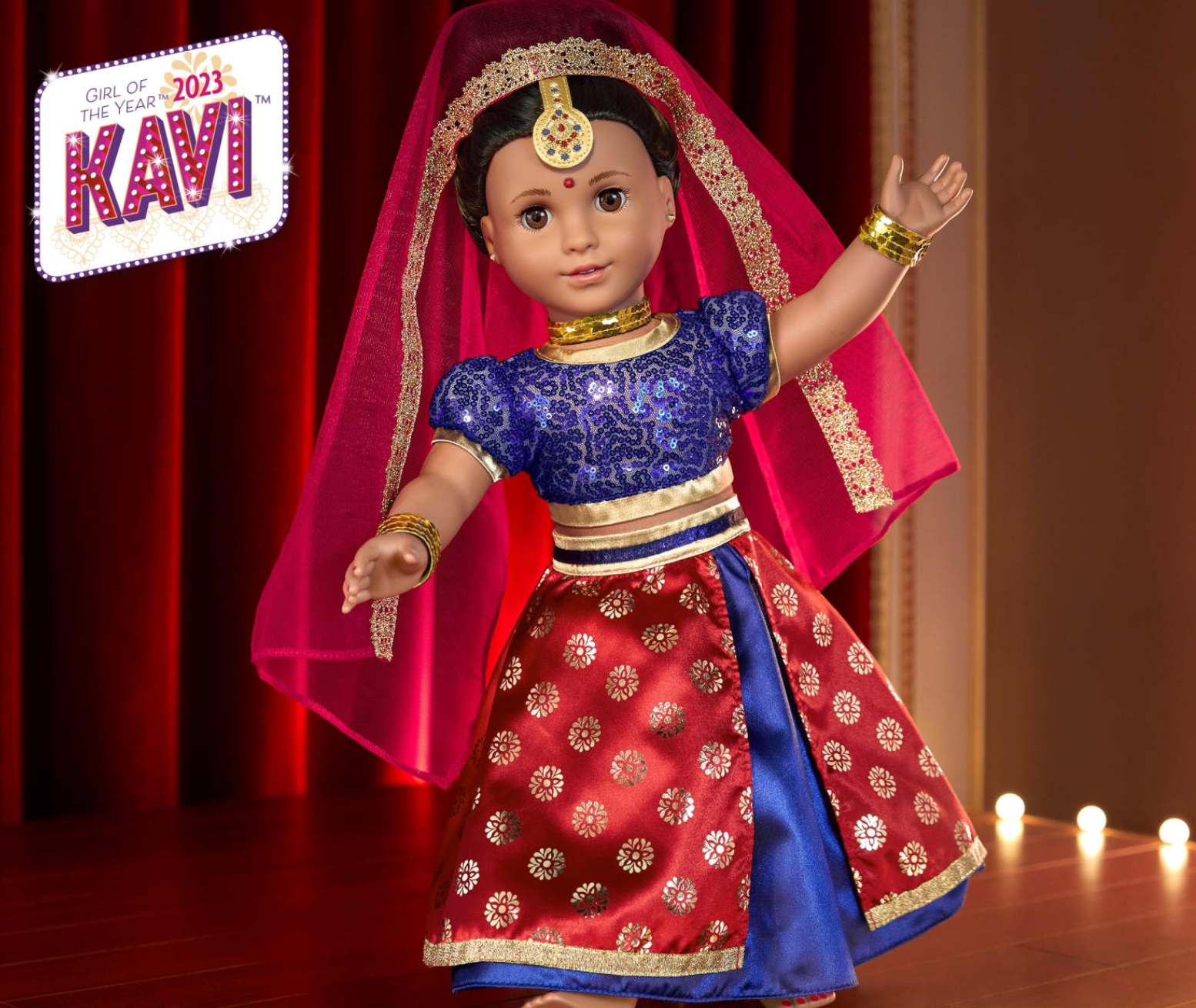American Girl, raised on promise
There are many ways to measure the success of an ethnic group or racial group in immigrant America, and by several metrics, Indian-Americans top the list. From being the best educated cohort (82% of Indian-American adults ages 25-55 are college educated, compared to just 42% of whites), to the wealthiest (median family income $133,130, well above the white median income of $86,400), they are considered a worthy fit for the American Dream. Less well chronicled is their social outreach and acceptance. While the common perception is that Indian-Americans tend to gravitate to good school districts because of their emphasis on providing good education to their children, and to swish neighborhoods given their wealth, they don't agglomerate into ethnic enclaves, much less ghettos. Although there are many Indian-heavy districts across America, their population is fairly diffused, suggesting they are comfortable mainstreaming themselves. One measure of their social inclusion and acceptance, or arrival, surfaced earlier this month when American girl, the iconic doll brand, chose the fictional Indian-American "Kavi Sharma'' as its "Girl of the Year." This is no trifling matter. Mattel, the $ 5.5 billion toy and entertainment company that owns the American Girl brand, is enormously influential in American homes, particularly those with girl children. For the longest time, the American Girl's default look was blonde and blue-eyed, like Barbie, which is also owned by Mattel.
 In recent years though, American Girl has had a leg up on Barbie, partly on account of diversity. While the 1990s saw Mattel introduce Addy Walker, the first African-American Girl, and Josefina Montoya, the first Latina-American Girl, it is only now the brand has looked to Asia, introducing Chinese-American Corinne Tan as the 2022 Girl of the Year, and now Kavi Sharma, thee 2023 American Girl of the Year. Kavi comes in a range of costumes from Bollywood chic to yoga outfits, and loves Broadway. And she doesn't come cheap: The doll, accompanying books, and frills can set you back by $ 150. Though Kavi is the first South Asian "Girl of the Year," she is not American Girl's first South Asian character. According to the company, Sonali Matthews, who was at least part South Asian, was introduced as a companion character to the 2009 "Girl of the Year," Chrissa Maxwell. Just like Indian-Americans got bit parts or were just an ethnic character on TV shows. Now Kavi, who the company says is from Metuchen, New Jersey, gets to fly solo. She may have arrived a few years late. Indian-American women have been making a splash in the US for decades now, pre-dating Kamala Harris' entry to the portals of power. Kalpana Chawla's trail-blazing and eventually tragic space journey in 2003 and Indra Nooyi's ascension as CEO of PepsiCo in 2006 were milestones in an incredible journey that began nearly 140 years ago. From the get-go, Indian women have been traveling or emigrating to America with or without their spouses, as with Anandibai Joshee, the first Indian woman to graduate from a medical school in the U.S., and relatively recently, Arati Prabhakar, Science Advisor to the President who headed among other institutions DARPA. Many came independently, like with Harris' mother Shyamala Gopalan, and found partners here. Before and after Nooyi, they have sat on school boards and corporate boardrooms, run companies and won elections, and blazed a trail in academia, entertainment, medicine, engineering, law, politics and public life – sometimes ahead of Indian men. Today, of the nearly 200,000 Indian students in the United States, 37 per cent are women, according to US Citizenship and Immigration Services (USCIS). Many will eventually settle here in pursuit of the American Dream, joining the many, many more now born here. American Girl Kavi Sharma is a reminder that they belong.
In recent years though, American Girl has had a leg up on Barbie, partly on account of diversity. While the 1990s saw Mattel introduce Addy Walker, the first African-American Girl, and Josefina Montoya, the first Latina-American Girl, it is only now the brand has looked to Asia, introducing Chinese-American Corinne Tan as the 2022 Girl of the Year, and now Kavi Sharma, thee 2023 American Girl of the Year. Kavi comes in a range of costumes from Bollywood chic to yoga outfits, and loves Broadway. And she doesn't come cheap: The doll, accompanying books, and frills can set you back by $ 150. Though Kavi is the first South Asian "Girl of the Year," she is not American Girl's first South Asian character. According to the company, Sonali Matthews, who was at least part South Asian, was introduced as a companion character to the 2009 "Girl of the Year," Chrissa Maxwell. Just like Indian-Americans got bit parts or were just an ethnic character on TV shows. Now Kavi, who the company says is from Metuchen, New Jersey, gets to fly solo. She may have arrived a few years late. Indian-American women have been making a splash in the US for decades now, pre-dating Kamala Harris' entry to the portals of power. Kalpana Chawla's trail-blazing and eventually tragic space journey in 2003 and Indra Nooyi's ascension as CEO of PepsiCo in 2006 were milestones in an incredible journey that began nearly 140 years ago. From the get-go, Indian women have been traveling or emigrating to America with or without their spouses, as with Anandibai Joshee, the first Indian woman to graduate from a medical school in the U.S., and relatively recently, Arati Prabhakar, Science Advisor to the President who headed among other institutions DARPA. Many came independently, like with Harris' mother Shyamala Gopalan, and found partners here. Before and after Nooyi, they have sat on school boards and corporate boardrooms, run companies and won elections, and blazed a trail in academia, entertainment, medicine, engineering, law, politics and public life – sometimes ahead of Indian men. Today, of the nearly 200,000 Indian students in the United States, 37 per cent are women, according to US Citizenship and Immigration Services (USCIS). Many will eventually settle here in pursuit of the American Dream, joining the many, many more now born here. American Girl Kavi Sharma is a reminder that they belong.
 Chidanand Rajghatta is the Times of India’s US-based Foreign Editor, long-time Washington D.C. scribe and sutradhar. In earlier roles, Rajghatta has worked with India’s leading news brands, including The Indian Express, The Telegraph of Kolkata, India Today, and The Sunday Times of India. He received his Master's Degree in mass communication from Bangalore University, Bangalore. He is the author of The Horse That Flew: How India's Silicon Gurus Spread Their Wings, Illiberal India: Gauri Lankesh and the Age of Unreason and Kamala Harris: Phenomenal Woman.
Chidanand Rajghatta is the Times of India’s US-based Foreign Editor, long-time Washington D.C. scribe and sutradhar. In earlier roles, Rajghatta has worked with India’s leading news brands, including The Indian Express, The Telegraph of Kolkata, India Today, and The Sunday Times of India. He received his Master's Degree in mass communication from Bangalore University, Bangalore. He is the author of The Horse That Flew: How India's Silicon Gurus Spread Their Wings, Illiberal India: Gauri Lankesh and the Age of Unreason and Kamala Harris: Phenomenal Woman.
